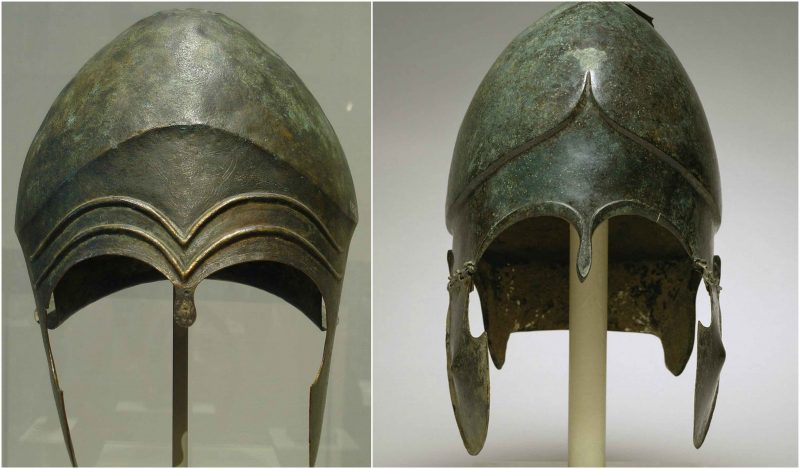A Chalcidian helmet was a type of bronze helmet worn by warriors of the Hellenic world, especially in Greece, during the 5th and 4th Century BC.
The design of the Chalcidian helmet is distinguished by the curved cheek pieces, which are attached by pins terminating in snake heads.
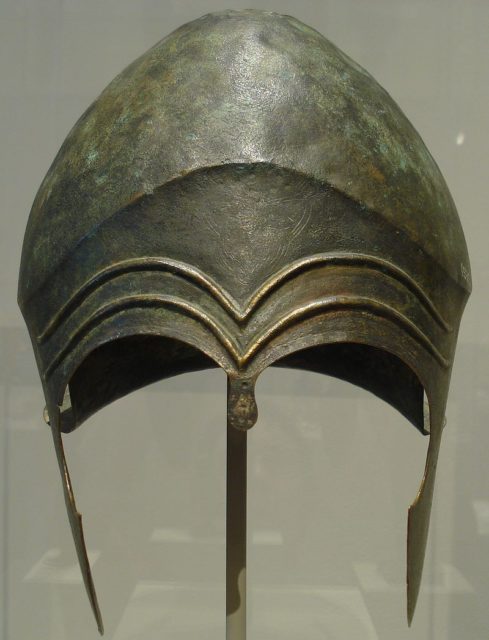
The Chalcidian helmet is so named as it was first depicted on pottery thought to derive from the Euboean city of Chalcis.
However, it’s not known if the helmet actually originated in Chalcis, for the matter of fact it is not proven that the pottery in question was Chalcidian.
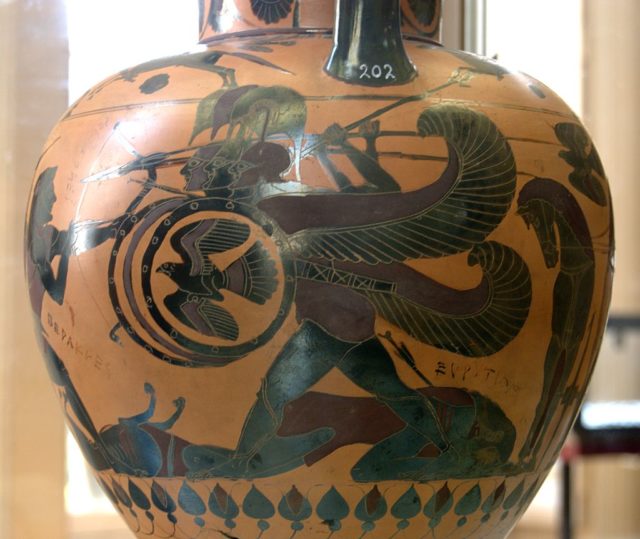
The bronze helmet had been developed as an improved version of Corinthian helmet, allowing the wearer superior hearing and vision.
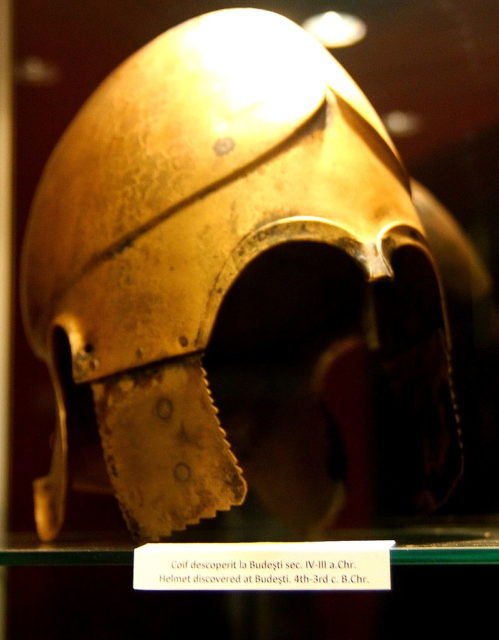
The helmet consisted of a hemispherical dome and underneath that, commonly inset from the top dome, a pair of cheek pieces and a neck guard, with a substantial loop on either side for the wearer’s ears.
The Chalcidian helmet could be entirely one piece or the cheek pieces could be attached individually by hinges. At the top of the helmet were usually placed adornments such as combs.
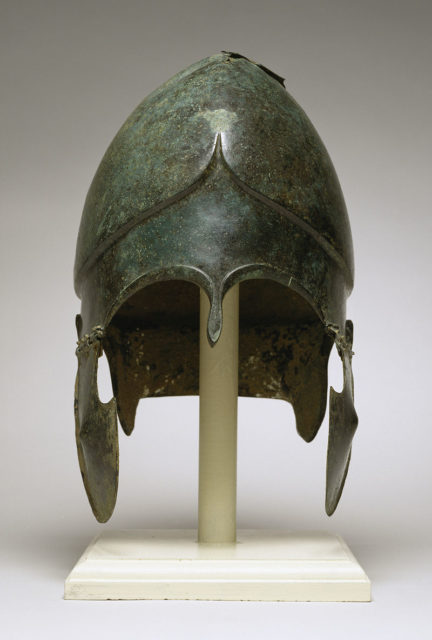
The helmet was still worn by armored warriors by the time of Alexander the Great, especially by the spear-armed heavy infantrymen Hoplites.
It is said that many Macedonian soldiers who ruled the rest of Greece and went on to forge a massive empire also wore this type of helmet.
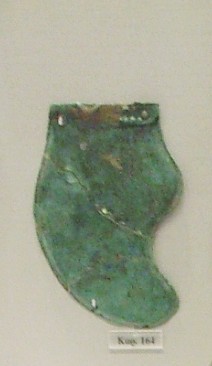
The Chalcidian helmet is believed to have developed in turn into the Attic helmet, which is an iconic emblem of classical warriors.
